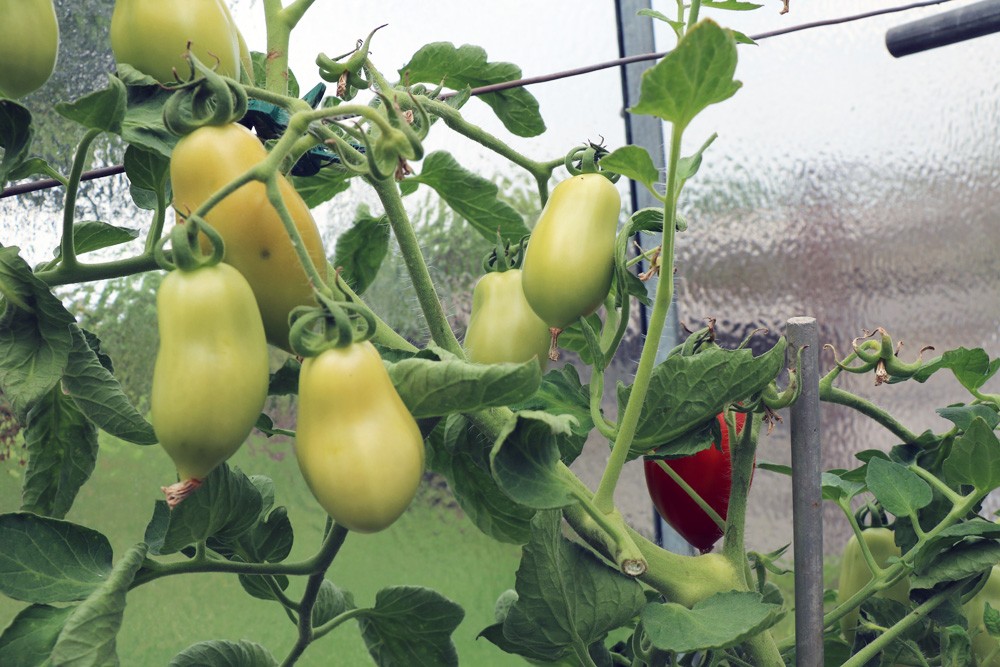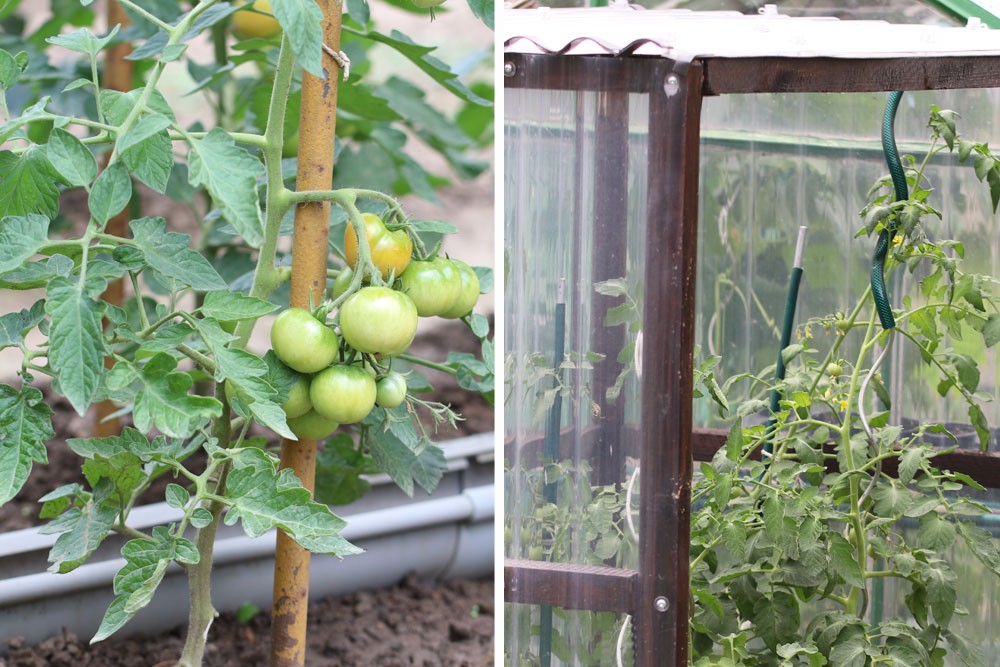Many who want to cultivate tomatoes in their greenhouse, can start growing them much earlier than in the open field. When is the ideal time for this and what factors to consider, you can learn here!
Tomatoes can be easily cultivated in the greenhouse, and even sow! The advantage here is that the tomatoes thrive in a controlled environment and can therefore be sown and planted earlier. But be careful: despite the protective function of the greenhouse, certain conditions should still be met before the plants take their place in the greenhouse.
Greenhouse types
The type of greenhouse is directly related to the optimal timing of sowing and planting tomatoes. This is because the growing of tomato plants is only successful when certain conditions, such as the optimal temperature, are present. Since the climatic conditions are essential for the rearing and growth of tomato plants, it is therefore necessary to first distinguish between the different types of greenhouses:
Cold houses
- are available with or without heating
- can be kept frost-free if necessary
- Temperature: below 12 degrees
Temperate greenhouses
equipped with heating
warm even in winter
Temperature: 12-18 degrees
Warm houses
- also called greenhouses
- year-round cultivation of sensitive plants possible
- Temperature: above 18 degrees
- Tip: Greenhouses can be easily heated with frost monitors or a solar greenhouse heater. Alternatively, of course, a manure heater can be incorporated into the soil.
Sowing in the greenhouse

The greenhouse provides a controlled environment for tomato plants, which is why they can be sown a little earlier than in the open ground. Accordingly, for sowing in an unheated greenhouse is usually chosen a time between mid-March and mid-April. Those who own a temperate greenhouse can even bring forward the sowing to mid to late February. It is important that the optimal temperatures for germination are given:
- Temperatures between 18-24 degrees
- optimal day temperature: 23-25 degrees
- optimal night temperature: 17-18 degrees
Tip: How much to heat depends on two factors. The lower the outside temperatures and the larger the glass surfaces of the greenhouse, the more heating is required.
Planting in the greenhouse
In any case, if you sow tomato plants on the windowsill and then want to put them in the greenhouse, you should wait until mid/late April. This is because amateur gardeners also benefit from the protective function of the greenhouse when planting out, so that the plants can be used earlier. However, always make sure that only healthy specimens are planted. In addition, the young plants should have reached a certain growth and have the following characteristics:
- first visible flower cluster
- 2 to 3 flowers present
- plant height of about 20-25 cm

Once the appropriate specimens are selected, it is also necessary to create the optimal conditions for the seedlings. Firstly, the soil temperature is important, which should be between 13 and 15 degrees. To ensure that the young plants are supplied with sufficient heat, it is advisable to incorporate a manure heater. In addition, the following factors play an important role in planting tomatoes in the greenhouse:
- Daytime temperatures between 18-20 degrees
- night temperature at about 16 degrees
- if it is much colder at night = heating is absolutely necessary
Tip: Tomato plants can also be hardened off in the greenhouse. To do this, lower the night temperature towards the end of cultivation so that it is below 16 degrees.
Control greenhouse
Tomatoes are very sensitive to cold, so always make sure that the temperatures remain in the ideal range. However, even with heated greenhouses, it can happen that the temperatures drop and it simply becomes too cold. To avoid this, it is advisable to regularly check the greenhouse for sources of error and correct them as soon as possible:
- dirty panes let too little light through
- Cleaning the panes improves the light conditions
- damage to outer walls and leaking seals
- warm air can escape and cold air flows in
- regular airing reduces too high air humidity
Tip: In addition, it is advisable to insulate the greenhouse with bubble or bubble wrap. This not only protects the plants from the cold, but also reduces heating costs by around 50 percent.


